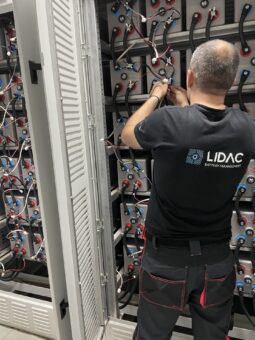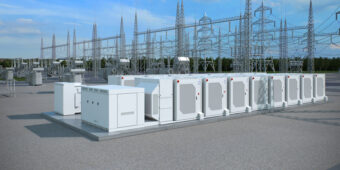
The increasing demand of consumers to be supplied at all times with electrical energy to satisfy all their needs is one the basic causes for the complexity of an energy system. The growing consumption of electricity, as compared to the generation thereof, threatens the stability and operation of the overall system, resulting in voltage and frequency deviating from their nominal values.
The issue is additionally complicated by implementation of renewable energy sources and their growing share in the distribution grid. Taking into account their variable nature, specifically, the fluctuation in the electrical energy generation from these sources, the issue of voltage and frequency in the distribution grid is further complicated. Namely, the initiated energy transition and putting an end to thermal power plants, that is, giving up combustion of fossil fuels for generation of electricity, is aimed to reduce greenhouse gas emissions, first of all, of CO2.
At the same time, the entire energy system is encountering a big challenge of stability and continuity of electrical energy supply. It is generally known that thermal power plants are the pillars of stability of any energy system, whereas renewable sources are unstable factors of the same. In order to ensure a stable and sustainable transition of the electrical energy generation system from thermal power plants to renewable energy sources, the expert community agrees that the construction of optimal systems for energy storage needs to be included, along with the continued increase in the installed power of wind turbines and solar panels. Several technological solutions for electrical energy storage are nowadays used, such as: battery energy storage systems, compressed air, flywheel-operated hydro pumps (reversible hydro power plants).
In focus:
Taking into account the advantages resulting from the use of a specific technology, the battery energy storage systems are distinguished as front-runners, compared to other technological solutions. What makes the battery systems specific is their flexibility in operation, efficient construction (implementation), efficient cost-effective solution and, as the most important of all, quick responsiveness measured in milliseconds. The battery energy storage systems are globally already present, with the installed power of more than 20 GW, while last month in our region a battery energy storage system of the installed power of 10 MW has been put into operation. The reason for connection of a growing number of such types of battery energy storage solutions include economic, environmental and technical benefits they provide.

These benefits directly include the improvement of the quality of electricity, mitigation of voltage deviations, frequency regulation, load transfers, load levelling and peak decrease. They facilitate the integration of renewable energy sources, grid expansion and overall cutting down of costs of operational reserves and reduction of greenhouse gas emissions. One of the positive examples in the region is the interest of the thermal power plant “Gacko” in the installation of the battery energy storage system. The thermal power plant “Gacko”, in cooperation with the company Lidac, a domestic leader in the field of battery management, design and maintenance of battery systems, has developed a preliminary design for the battery energy storage system of the designed installed power of 30MW. Thus, the thermal power plant would reduce the amount of coal combusted for generating electricity during on-peak hours. The battery energy storage system, positioned with conventional producers of electrical energy, would support the transition toward complete abandoning of fossil fuels for electrical energy generation. It is necessary to bear in mind that any erroneous assessment and designing could result in errors of misuse or incorrect position of a battery energy storage system, that could result in worsening the quality of electrical power in distribution grids, decrease in reliability and load control, and could also adversely affect the voltage and frequency regulation. The need for energy storage systems, in particular battery energy storage systems, does exist. However, we should be maximally cautious when developing their designs and positioning so as to avoid worsening of the existing situation of the energy system and gain maximum positive features and opportunities provided by such battery energy storage systems.
Prepared by: Nevena Đukić
Read the story in the new issue of the Energy portal Magazine RENEWABLE ENERGY SOURCES.





